
HathiTrust is a partnership of academic and research institutions, offering a collection of millions of titles digitized from libraries around the world. Users have the ability to search full-text books and read them online.

HathiTrust is a partnership of academic and research institutions, offering a collection of millions of titles digitized from libraries around the world. Users have the ability to search full-text books and read them online.

The e-leo experiment stems from the very particular nature of the Biblioteca Leonardina collection, which possesses the entire published corpus of Leonardo da Vinci’s works, starting with the first edition of the Treatise on Painting of 1651, and ranging from the oldest editions to the most recent facsimile publications, including those of the national edition of Leonardo’s manuscripts and drawings. The archive contains almost the entire corpus of Leonardo’s work, relying on its collection of editions (from the first, dated 1651), and has set itself an even more ambitious goal, that of contextualizing them within the broader framework of Italian and European historical and scientific heritage. The data in the archive are texts and drawings, analysed and classified by means of indexing methods for drawing searches, semantic glossaries, and search filter tools: an apparatus proposing an integrated processing model for Renaissance manuscripts by artist-engineers. In parallel, a scientific programme is being developed for the study of Leonardo’s specialized “languages” (mechanics, optics, anatomy, architecture, etc.), with the aim of giving access to the various 15th and 16th century manuscript production in the Vulgar Italian. A programme of translations into English of Leonardo’s corpus has also been started. Furthermore, e-Leo is currently experiencing a further, twofold stage of development: on the one hand, we are processing manuscripts contemporary with Leonardo (such as the Zibaldone by Bonaccorso Ghiberti), and on the other hand, his literary sources (not yet published).
E-leo meets the issue of the accessibility of the Leonardian corpus, published in a number of facsimile editions between the nineteenth and the twentieth century (mainly the first half): 1. a corpus comprising a massive number of sheets; 2. Fragmented in terms of collocation; 3. extremely complex by virtue of its intrinsic features (the relationship between text and image, which distinguishes it graphically; the fragmentariness of the drawings and projects, which are rarely finished; and the difficulty of reading the texts because they are themselves fragmentary, besides being in mirror writing). At this time it is the most complete digital edition of Leonardo’s corpus. It builds on that bulk of publications of manuscripts and drawings mentioned above, providing a powerful tool for accessing it and a resource for the study and analysis of Leonardo da Vinci’s works (but also for a broader and more generalized treatment, with similar criteria, of technical-scientific texts from the late medieval and Renaissance periods). It is indeed intended to provide further points of access to the content: the index of drawings, which tries to account for and include what gets left out in a textual search; and the glossary, which attempts to describe and historicize Leonardo’s language.

The Routes of the Ancient Italian Book in Normandy database (RDLI) offers an inventory and description of the copies of editions of texts published in Italy from the beginnings of printing to 1600 kept in public and private funds in the west of France.
Private Libraries in Renaissance England
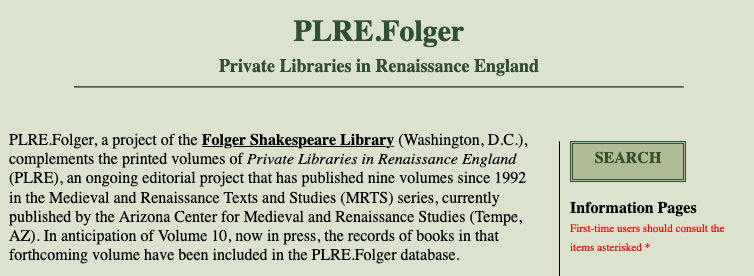
A companion to the published volumes of Private Libraries in Renaissance England, this searchable database is composed of book lists and library catalogs of private book collections in England collected from wills, inventories, and account ledgers.The aim of the collection is to reconstruct the history of book reading and collecting as well as the book trade.
Lexicons of Early Modern English
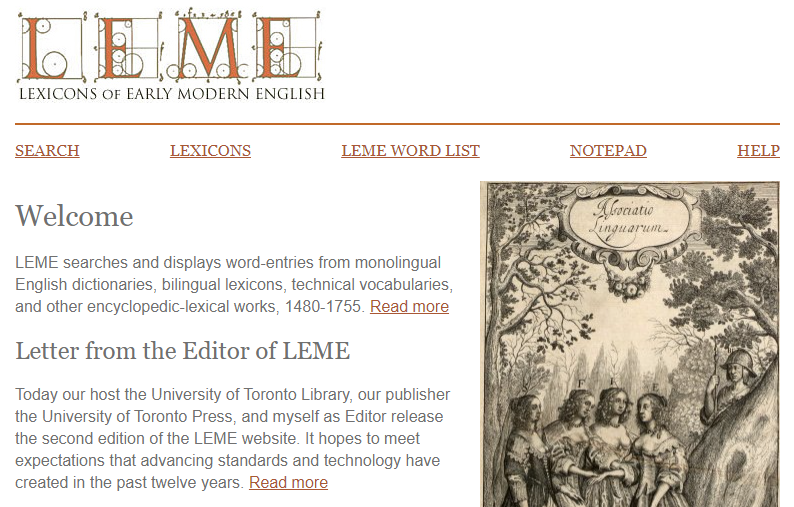
A database of 186 lexical texts published or written in England from 1475 to 1702 that hold fully searchable 620,000 word-entries. LEME offers unique digitized access to dictionaries, glossaries, and other lexical texts in a host of languages, focusing on English but including major works in Latin, French, Italian, and Spanish. LEME is hosted by the University of Toronto Library and published (since 2006) by the University of Toronto Press. It grows annually.
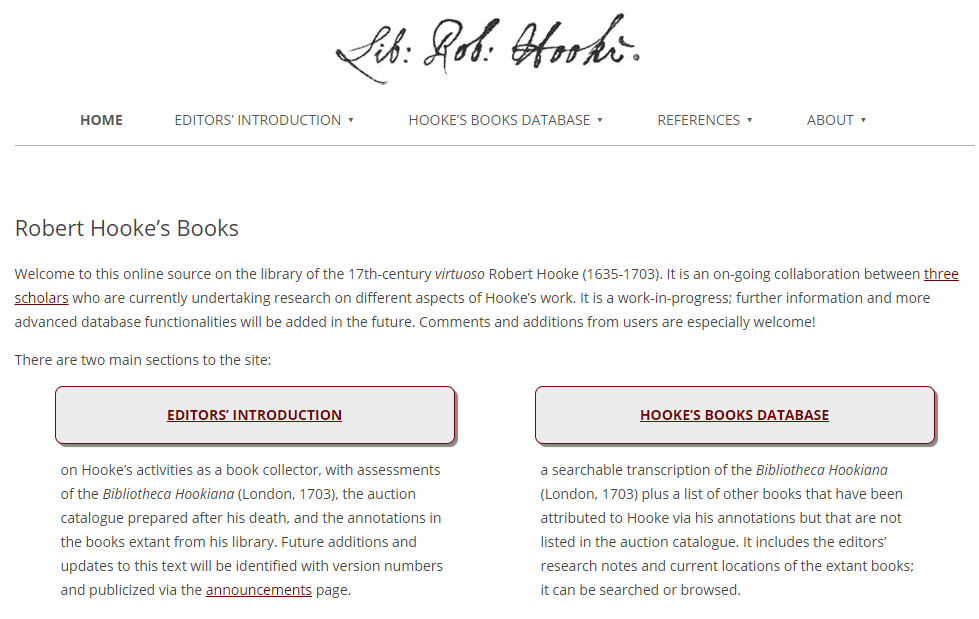
An online source on the library of the 17th-century experimental philosopher and architect, Robert Hooke (1635–1703). The site is comprised of an extensive editors’ introduction and a searchable database of 2,711 records.
Rome Reborn: The Vatican Library and Renaissance Culture
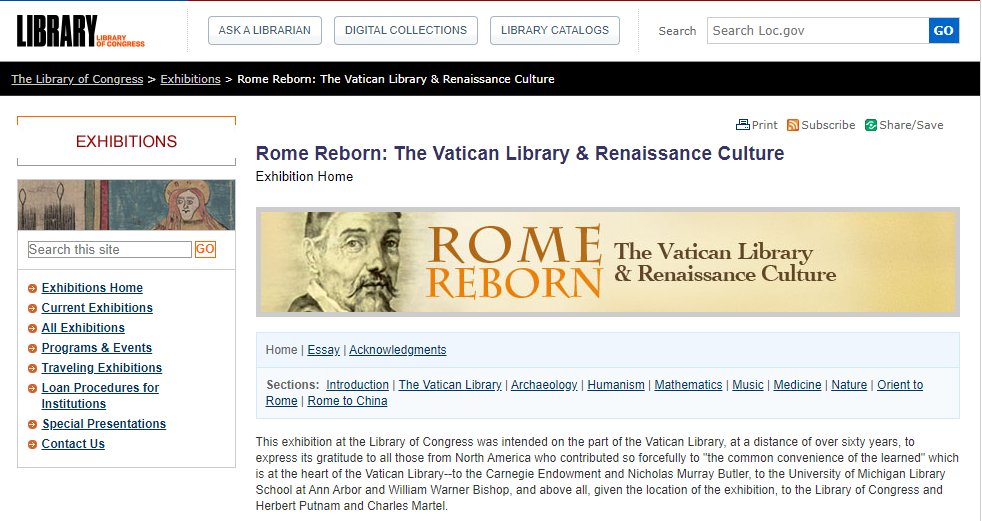
A Library of Congress Exhibition from 8 January–30 April 1993 (Vatican Library manuscripts). This older version of the site has some additional images and better image credits.
Servizio Bibliotecario Nazionale OPAC (Library Catalogs)
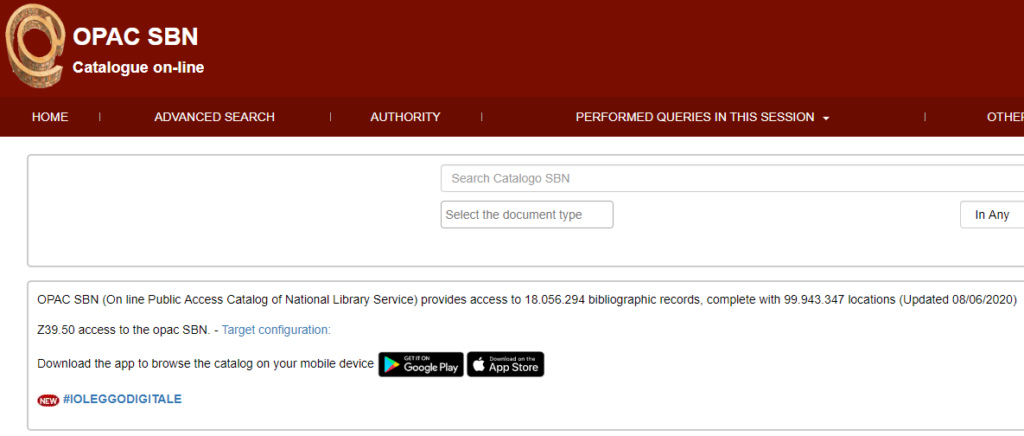
Catalogo collettivo delle biblioteche che partecipano al Servizio Bibliotecario Nazionale (Italian Libraries Network).